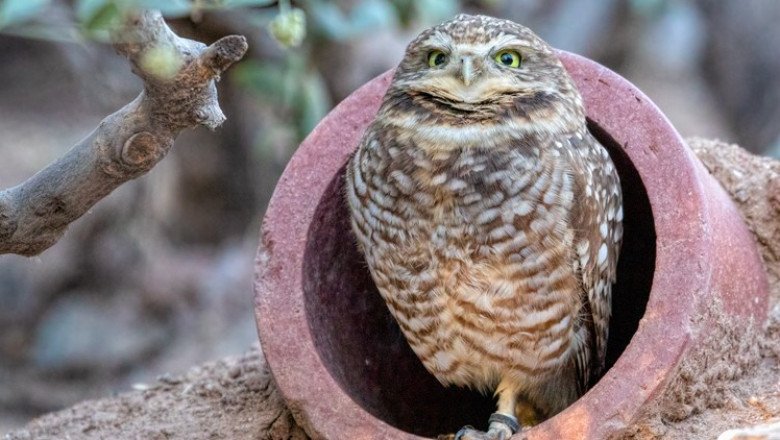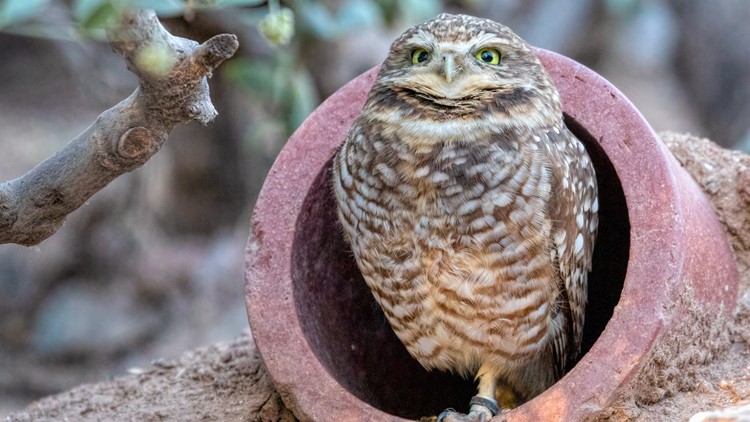
views

Wild at Heart partners with private and government landowners to re-locate the owls to new habitats around Arizona.
PHOENIX — Conservation often involves give and take. One solution may create another problem.
The construction of sprawling solar farms on hundreds of acres of the Arizona desert – considered necessary for a clean energy transition – is pushing out the Western Burrowing Owl from their underground homes.
“For decades home development has been the primary driver, but in recent years solar farms are playing a role. They have a big footprint,” said Greg Clark of Wild at Heart raptor rescue in Cave Creek.
But there is hope for the future of the small, spunky birds of prey.
Wild at Heart partners with private and government landowners to re-locate the owls to new habitats around Arizona. The organization, more than two decades old, relies on donors and volunteers to support the existence of the iconic birds.
“I try to keep as impassionate as I can, but they’re adorable,” Clark said. “They have antics. They chase each other around. And they have attributes of other owls.”
They also support the ecosystem and farmers. They eat grasshoppers, bugs and mice, and they literally fill a gap in the landscape by inhabiting existing burrows.
“They’re part of integrated pest management. They eat all the stuff the farmers don’t want,” Clark said. “Burrowing owls share space with people. What we’ve done over the last 100 years is eliminate the mammals that dig the holes for them. So now we’re down to a very small percentage of burrowing owls.”
On a recent Saturday, volunteers for the Audubon Society and Wild at Heart installed underground habitats on a grassy plateau near Prescott.
Clark has been helping to re-locate burrowing owls across Arizona since he noticed the problem in the 1990’s while working for the Game and Fish Department.
“Wherever we went, we discovered that burrowing owls were just not there,” Clark said. “I investigated what was wrong and I decided that I could fix it.”
Successful re-location is a process that takes several weeks. It involves introducing the owls to their new burrows while they are contained in predator-resistant tents, and feeding them while they acclimate to their surroundings. The central feature of the burrows are large plastic drums buried several feet underground. Tubes lead from the drums to the ground surface. The design is meant to prevent flooding and protect the owls from predators.
Surveillance videos show the owls hopping around their new homes during the weeks following the operations – signs the owls are thriving in their new homes. Researchers also use probing cameras to confirm the owls have laid eggs inside the burrows.
Once the owls are settled into their new homes, many will migrate to other parts of the region and possibly return later.
Another force making life difficult for the Western Burrowing Owl is climate change. Researchers re-locate the owls to where they have the best chance at long-term survival.
“As the drought has gone on for like 20 years, the normal grassland that produces food it’s just almost gone,” Clark said. “It’s essential to have higher elevation grassland that can produce food so that the owls can thrive where we’re going to relocate them.”
One trait in the burrowing owls’ favor is their adaptability.
“They can hover like a kestrel. They can run on the ground like a roadrunner and catch stuff. They can sit on a perch, dive down and catch prey. They’re out during the day. They’re out at night,” Clark said.
https://wol.com/arizona-solar-farms-push-burrowing-owls-from-homes/
























Comments
0 comment